
How to Use MicroSD Card MP3 Module: Examples, Pinouts, and Specs
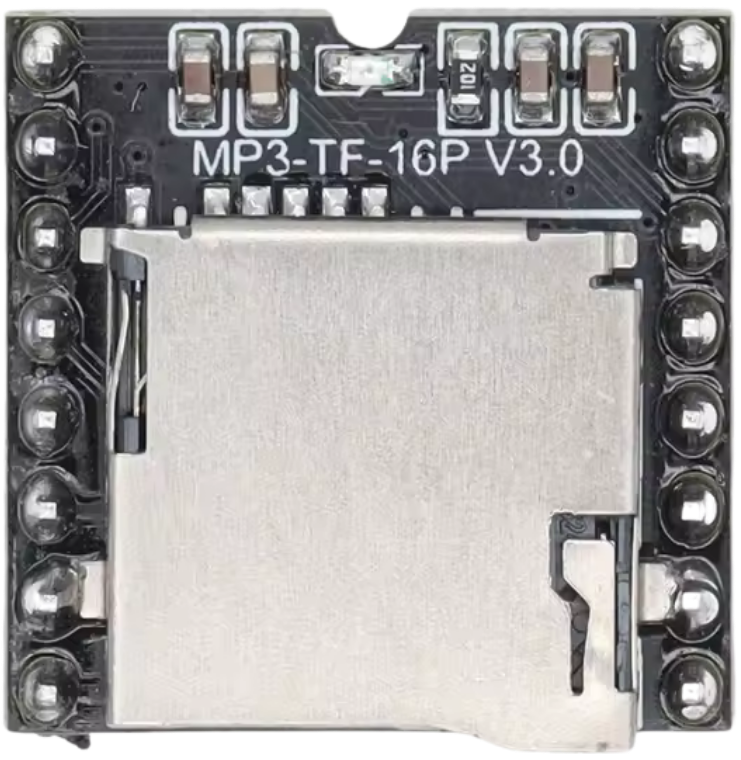
 Design with MicroSD Card MP3 Module in Cirkit Designer
Design with MicroSD Card MP3 Module in Cirkit DesignerIntroduction
The MicroSD Card MP3 Module is a compact and versatile component designed for playing MP3 audio files stored on a MicroSD card. It integrates an MP3 decoder chip and a MicroSD card slot, making it an ideal solution for embedded systems and DIY audio projects. This module is widely used in applications such as portable audio players, voice playback systems, and interactive projects requiring sound output.
Explore Projects Built with MicroSD Card MP3 Module
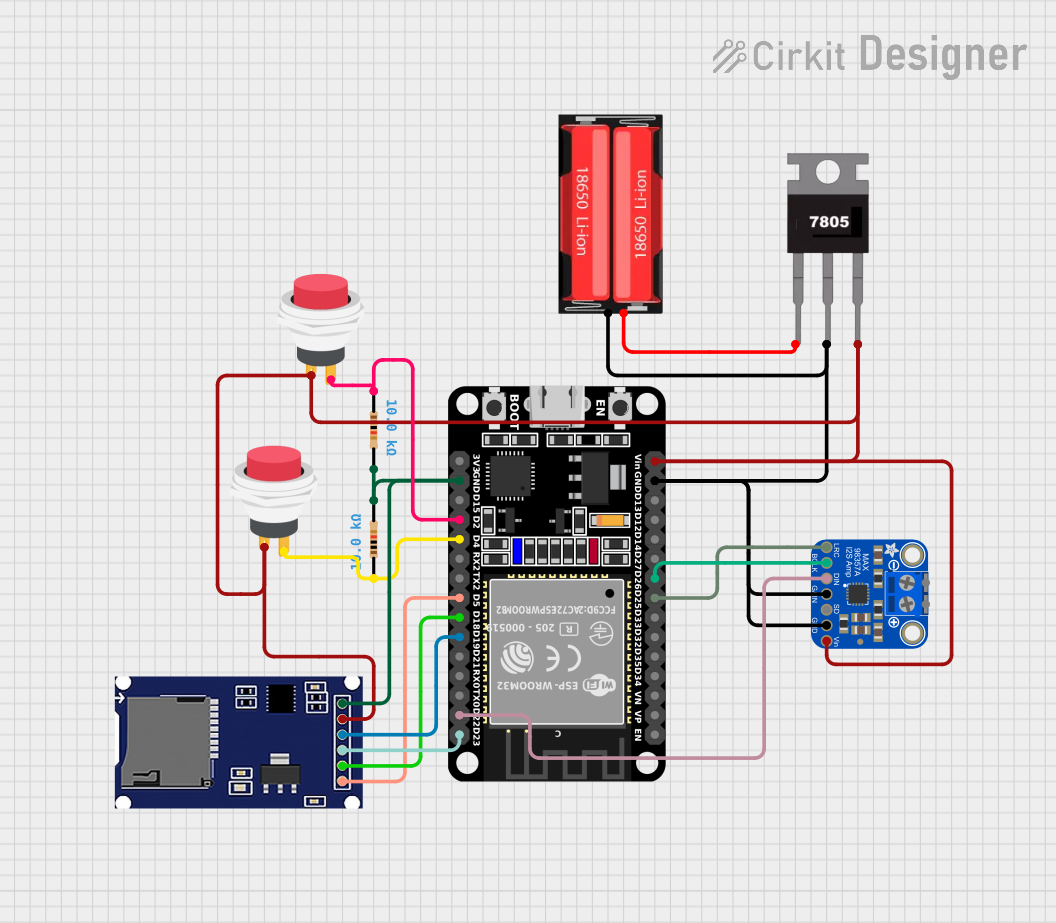
 Open Project in Cirkit Designer
Open Project in Cirkit Designer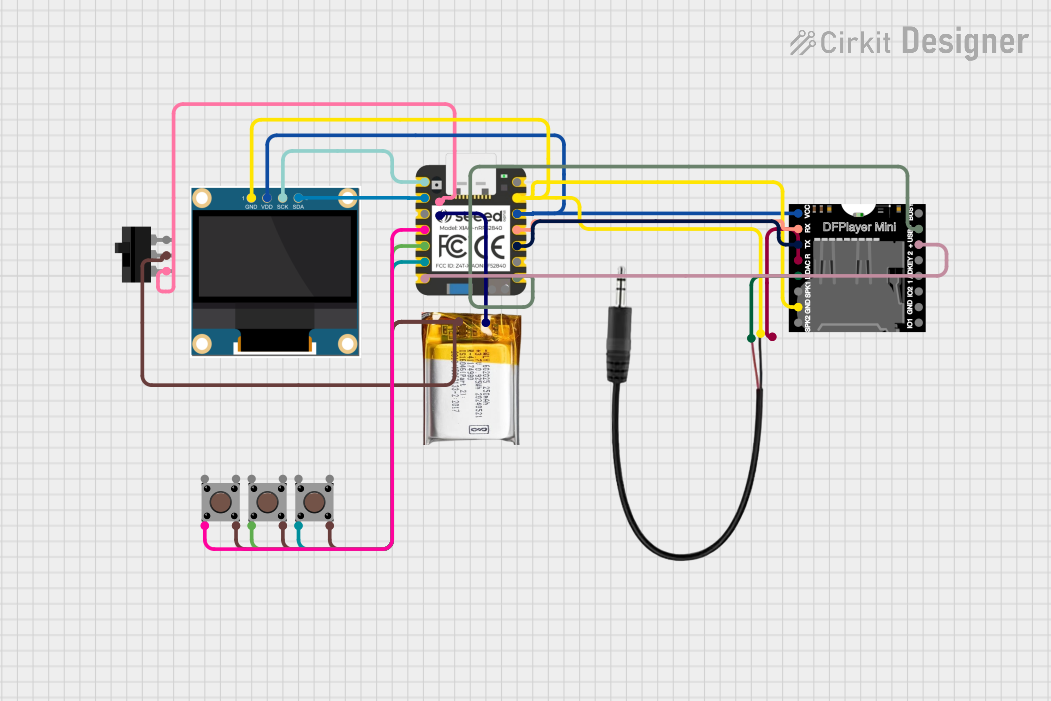
 Open Project in Cirkit Designer
Open Project in Cirkit Designer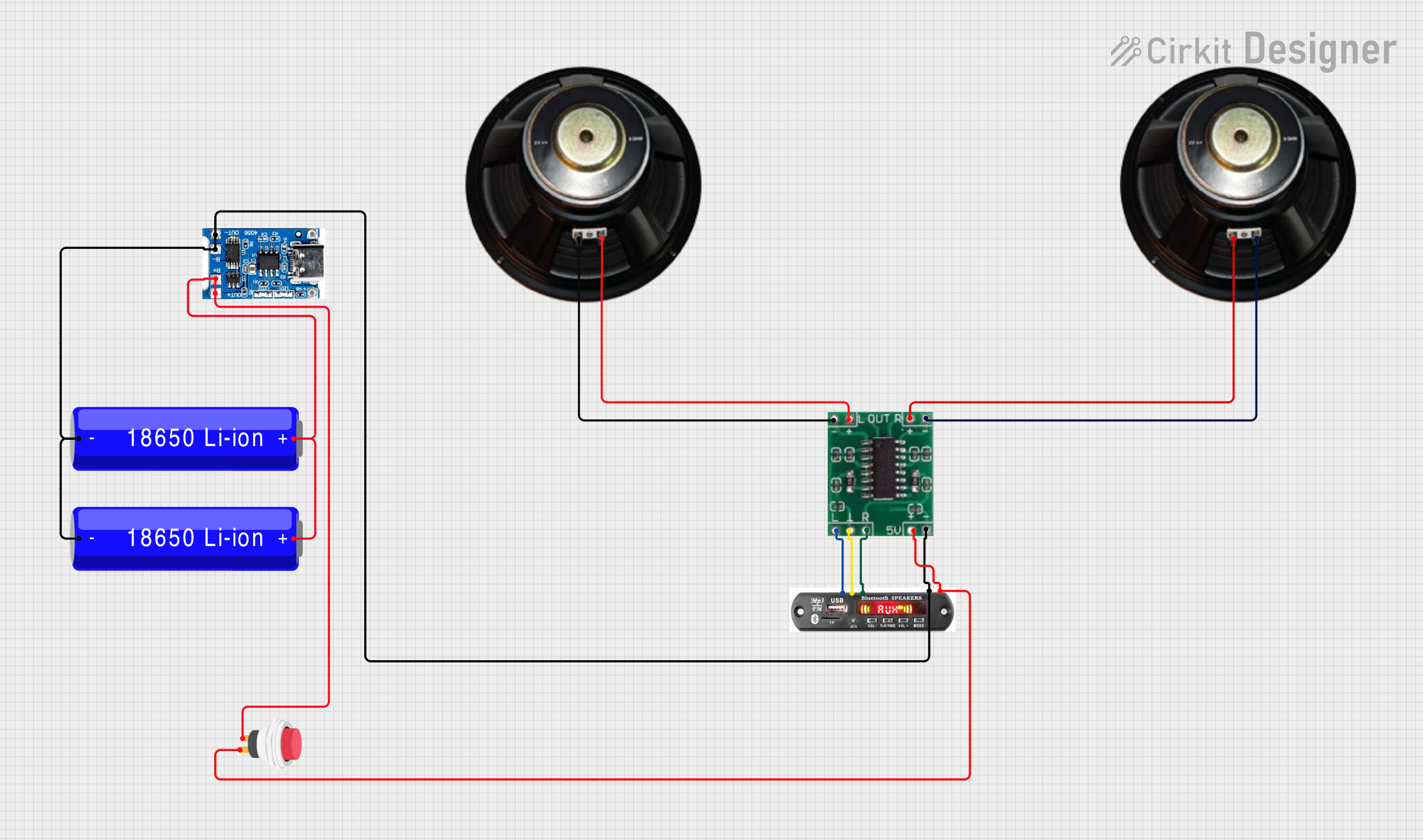
 Open Project in Cirkit Designer
Open Project in Cirkit Designer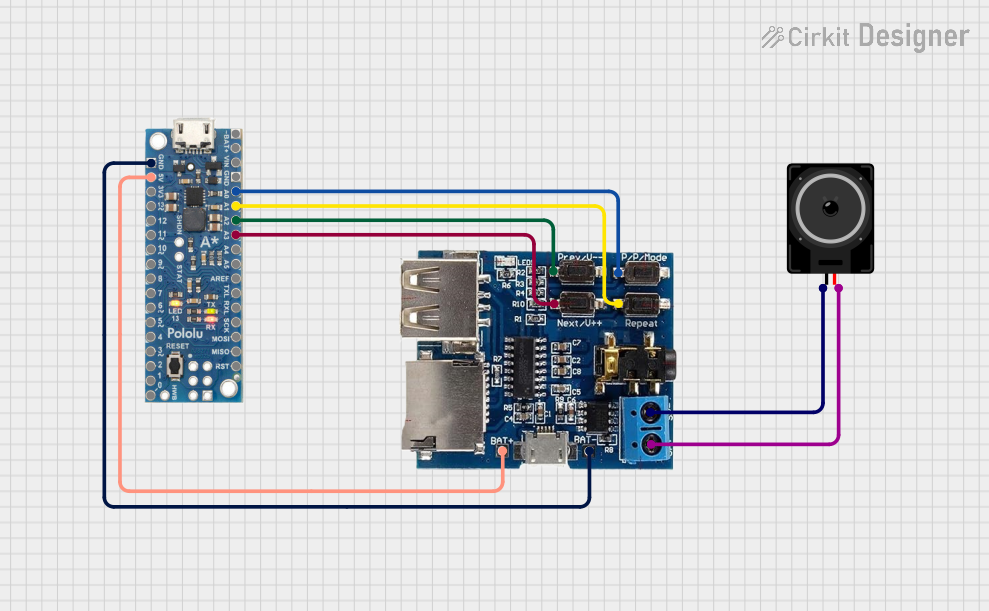
 Open Project in Cirkit Designer
Open Project in Cirkit DesignerExplore Projects Built with MicroSD Card MP3 Module

 Open Project in Cirkit Designer
Open Project in Cirkit Designer
 Open Project in Cirkit Designer
Open Project in Cirkit Designer
 Open Project in Cirkit Designer
Open Project in Cirkit Designer
 Open Project in Cirkit Designer
Open Project in Cirkit DesignerCommon Applications
- DIY audio players and jukeboxes
- Voice-guided systems (e.g., navigation devices, talking clocks)
- Interactive art installations
- Educational projects and prototypes
- Embedded systems requiring audio feedback
Technical Specifications
Below are the key technical details of the MicroSD Card MP3 Module:
| Parameter | Specification |
|---|---|
| Operating Voltage | 3.3V to 5V |
| Current Consumption | ~20mA (idle), ~100mA (during playback) |
| Audio Output | Stereo (via 3.5mm jack or speaker pins) |
| Supported File Formats | MP3, WAV |
| MicroSD Card Support | Up to 32GB (FAT16/FAT32 file system) |
| Communication Protocol | UART (default baud rate: 9600 bps) |
| Dimensions | ~45mm x 36mm x 12mm |
Pin Configuration
The module typically has the following pin layout:
| Pin Name | Description |
|---|---|
| VCC | Power supply input (3.3V to 5V) |
| GND | Ground connection |
| RX | UART receive pin (connect to TX of microcontroller) |
| TX | UART transmit pin (connect to RX of microcontroller) |
| SPK+ | Positive terminal for speaker output |
| SPK- | Negative terminal for speaker output |
| DAC_R | Right channel audio output (for external amplifier) |
| DAC_L | Left channel audio output (for external amplifier) |
Usage Instructions
How to Use the Module in a Circuit
- Power the Module: Connect the VCC pin to a 3.3V or 5V power source and the GND pin to ground.
- Connect to a Microcontroller: Use the RX and TX pins to establish UART communication with a microcontroller (e.g., Arduino UNO).
- Insert a MicroSD Card: Format the MicroSD card to FAT16 or FAT32 and load it with MP3 files. Insert the card into the module's slot.
- Audio Output: Connect a speaker to the SPK+ and SPK- pins, or use the DAC_R and DAC_L pins for external audio amplification.
- Send Commands: Use UART commands to control playback, adjust volume, or select tracks.
Important Considerations
- Ensure the MicroSD card is properly formatted and contains supported audio files.
- Use a level shifter if your microcontroller operates at 3.3V logic levels to avoid damaging the module.
- Avoid powering the module with voltages higher than 5V to prevent damage.
- Use decoupling capacitors near the power pins to reduce noise and ensure stable operation.
Example Code for Arduino UNO
Below is an example of how to control the MicroSD Card MP3 Module using an Arduino UNO:
#include <SoftwareSerial.h>
// Define RX and TX pins for communication with the module
SoftwareSerial mp3Serial(10, 11); // RX = Pin 10, TX = Pin 11
void setup() {
mp3Serial.begin(9600); // Initialize UART communication at 9600 bps
Serial.begin(9600); // For debugging via Serial Monitor
delay(1000); // Allow the module to initialize
// Send a command to play the first track
playTrack(1);
}
void loop() {
// Add your logic here (e.g., play next track, stop playback, etc.)
}
// Function to send a command to play a specific track
void playTrack(uint8_t trackNumber) {
uint8_t command[] = {0x7E, 0xFF, 0x06, 0x03, 0x00, 0x00, trackNumber, 0xEF};
mp3Serial.write(command, sizeof(command));
Serial.println("Playing track: " + String(trackNumber));
}
Notes on the Code
- The
playTrackfunction sends a UART command to play a specific track. ReplacetrackNumberwith the desired track number (e.g., 1 for the first file on the MicroSD card). - Ensure the MP3 files are named in numerical order (e.g.,
001.mp3,002.mp3) for proper playback.
Troubleshooting and FAQs
Common Issues and Solutions
No Sound Output
- Cause: Incorrect wiring or missing audio files.
- Solution: Verify the speaker connections and ensure the MicroSD card contains valid MP3 files.
Module Not Responding
- Cause: Incorrect UART connections or baud rate mismatch.
- Solution: Double-check the RX and TX connections and ensure the baud rate is set to 9600 bps.
Playback Skipping or Stopping
- Cause: Poor MicroSD card quality or improper formatting.
- Solution: Use a high-quality MicroSD card and format it to FAT16 or FAT32.
Distorted Audio
- Cause: Overdriving the speaker or insufficient power supply.
- Solution: Use a speaker with appropriate impedance and ensure a stable power source.
FAQs
Can I use this module with a 3.3V microcontroller? Yes, but ensure proper level shifting for UART communication to avoid damaging the module.
What is the maximum supported MicroSD card size? The module supports MicroSD cards up to 32GB formatted in FAT16 or FAT32.
Can I control the volume programmatically? Yes, the module supports UART commands to adjust the volume.
Is it possible to play audio files other than MP3? Some modules may support WAV files, but MP3 is the primary supported format. Check the module's datasheet for details.